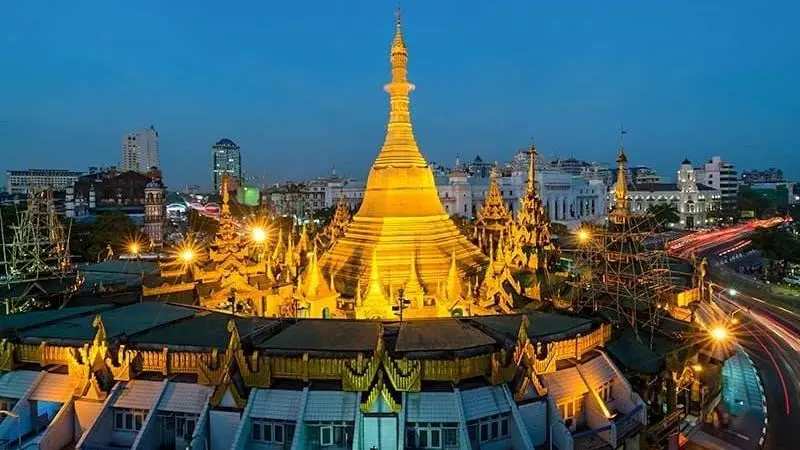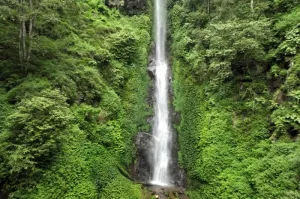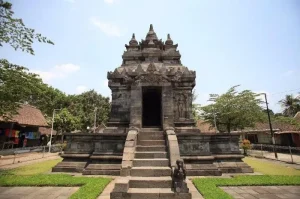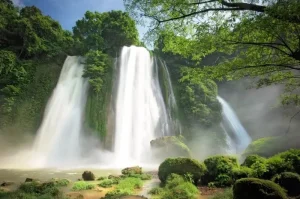History
Situated at the bustling center of Yangon, Myanmar’s largest city, the Sule Pagoda stands as a testament to the rich tapestry of the city’s history and the enduring spiritual devotion of its people. Legend has it that the Pagoda was built during the time of the Buddha, over 2,500 years ago, making it one of the oldest Buddhist sites in the city.
The name ‘Sule’ is derived from the Sule Nat, a spirit that was believed to have been lived in the area before the pagoda was built. According to local legend, the Sule Nat was converted to Buddhism, and its name was given to the pagoda as a symbol of this transformation.
During the British colonization of Myanmar, the Sule Pagoda found itself at the heart of Yangon’s design and development. The British used the pagoda as the nucleus of their grid pattern layout for the city, resulting in the pagoda’s location at the junction of the city’s major roads.
Over the centuries, the Sule Pagoda has served not only as a religious site but also as a space for political and social gatherings. It played a significant role during the country’s struggle for independence and has continued to be a site for political demonstrations and rallies.
Why Visit
The Sule Pagoda, with its golden stupa towering 44 meters high, offers visitors an enchanting glimpse into Myanmar’s deep-rooted Buddhist traditions and the country’s rich history. Its distinct octagonal shape, which continues up through the bell and the spire, is a unique architectural feature that sets it apart from most Burmese pagodas that have a circular design.
Being a place of active worship, the pagoda also provides visitors with an opportunity to witness Buddhist rituals and traditions firsthand. Moreover, the pagoda’s central location offers a vibrant blend of the sacred and the secular, where the tranquil ambiance of the pagoda contrasts with the bustling cityscape surrounding it.
As it’s said to be home to a hair relic of the Buddha, the pagoda is considered a significant pilgrimage site and is revered by the local Buddhist community. Its importance in the country’s political and social history adds another layer of significance to its religious status.
Location and Route
The Sule Pagoda occupies a prominent location in downtown Yangon, at the junction of Sule Pagoda Road and Mahabandoola Road. Its central position makes it easily accessible from any part of the city.
Yangon is well connected by air, road, and rail to other parts of Myanmar and internationally. Yangon International Airport offers frequent flights to and from major cities worldwide. For those traveling within the country, long-distance buses and trains are available to Yangon.
From anywhere in the city, the Sule Pagoda can be reached by taxi, bus, or even on foot, depending on your location. Given its proximity to other tourist attractions like the Yangon City Hall, Maha Bandula Park, and Bogyoke Market, visitors often include the Sule Pagoda in a broader sightseeing itinerary.
When to Visit
The Sule Pagoda can be visited throughout the year. However, given Myanmar’s tropical climate, the cool and dry months from November to February offer the most comfortable conditions for exploring.
The pagoda comes to life during religious festivals and holidays, especially during the Full Moon days, which are significant in the Buddhist calendar. These occasions offer an opportunity to witness special religious rituals and celebrations.
What to See
The primary highlight of the Sule Pagoda is undoubtedly its glistening golden stupa, a beautiful representation of traditional Burmese temple architecture. The stupa’s unique octagonal shape is a distinguishing feature that captures visitors’ attention.
Around the stupa, visitors will find a variety of Buddha images and shrines dedicated to different nat spirits, reflecting the syncretism of Burmese folk religion and Theravada Buddhism. The pagoda’s interior is adorned with intricate decorations and glass mosaics, adding to its charm.
Furthermore, visitors can engage in a traditional Buddhist ritual of pouring water on the Buddha statue corresponding to the day of their birth. This practice, known as ‘Bathing the Buddha,’ is believed to bring merit and blessings.
Finally, the Sule Pagoda offers a fascinating contrast between the serenity of the religious site and the hustle and bustle of the surrounding city. The views from the pagoda encapsulate a panoramic view of Yangon, from colonial-era buildings to modern high-rises, offering a captivating snapshot of the city’s past and present.
In essence, a visit to the Sule Pagoda is more than just a tourist experience—it’s a journey into Myanmar’s rich history, vibrant culture, and deep-rooted spiritual traditions. Whether you’re a spiritual seeker, a history buff, or a curious traveler, the Sule Pagoda has something to offer for everyone.








